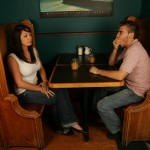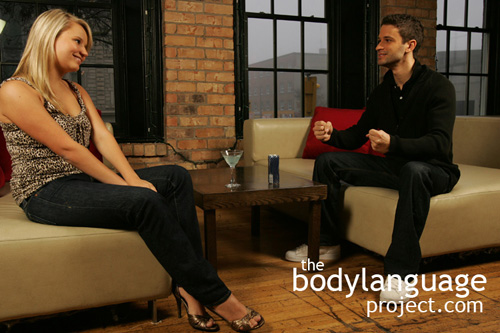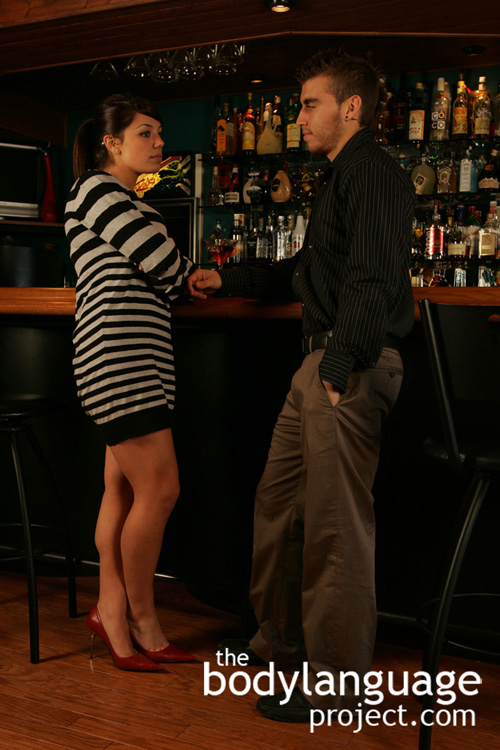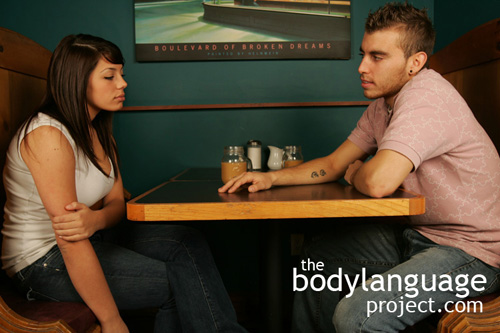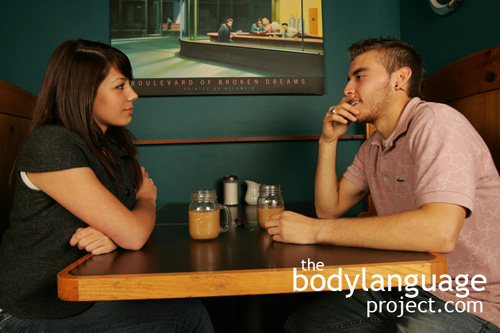
It looks like the conversation is going well, but she is gripping her arms showing negative thoughts.
When reading people we often get mixed messages. People’s faces appear genuine and honest, they show concern, fear, disgust, or happiness but their bodies sometimes show something else altogether. So how should we handle detecting different messages emanating from various parts of the body at the same time? Because people often “put on a mask” as they walk through life, and because we spend so much time focusing on the face, we learn early on to control our facial expressions. This makes the face a particularly bad place to rely on when really trying to weed through mixed signals. What if the “honest feet” as just discussed, conflict with messages delivered by the arms, hands and legs? Should we just rely on the feet and concentrate on nothing else, or is there some rhyme to the reason? In actual fact there is a class of body language that is much more reliable than another, and it has to do with the intended meaning of the message rather than specific cues or body parts. Given the choice between “positive” and “negative” messages, we should always rely on the negative nonverbal body language first. This is true irrespective of where it is found, be it in the face, arms, hands, legs, feet, torso or whatever.
It is negative body language that tells us a person’s true thoughts because society requires people to act positively even when things aren’t going well. We are told throughout our life to “Turn that frown upside down”, “Wipe that look off our faces” and “Smile for the camera” even when positive thoughts are the furthest from our mind. Eventually, we get very good at masking negative emotions especially in our faces, yet deep down the subconscious mind leaks other negative body language from various parts of our body. Negative body language happens precisely because we don’t want it to happen; we don’t want people to know we are upset, scared, bored, timid or in disagreement. These negative feelings can be damaging to ourselves or to others around us so we generally mask them to keep them to ourselves. In the long run, positive body language is desirable so it is quickly learned, and then brushed over the canvas of our faces, while the underlying negativity just barely shows through. We mask negative body language so we don’t appear rude or insensitive or even frail, scared or at a disadvantage.
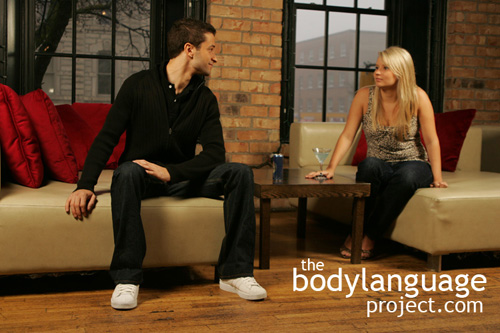
Does he really want to leave? In most cases negative body language is truthful, but he’s playing a game – hard-to-get!
You can imagine that someone who is bored with us will still smile and nod during our conversation, yet their body will orient toward the doorway while making covert looks to their wrist watch. Obviously, it is the negative language that is telling us that they are bored and we should ignore the facial cover-up that is going on. Likewise, happiness cues mixed with cues of anxiety such as gripping the arms or hands tightly indicates that a person is probably more unhappy and stressed rather than the reverse. What do we make of a person who enthusiastically leans forward putting out his hand to shake, then clenches his jaw tightly while saying how nice it is to finally be united once again? Chances are pretty good that your long lost friend has some negative issues with you and that he’s not so happy to be in your presence. Along with negative nonverbal body language as true honest indicators of feelings, recall initial reactions, over reactions that follow, as more genuine. Honest gestures happen quickly, sometimes even so fast that they are barely observable with the naked eye, but it is these flashes, or “microexpressions”, that mean something predictive, much more so than more obvious gestures that happen later on, or those that linger for some time. A small twitch of the muscles between the eyes, the “fear muscle” forces the eyebrows together to make a grin-like gesture that reveals a true sentiment. This expression happens so fast, it is impossible to stifle. When we get a sense of someone whom we find isn’t “just right” and fail to trust them, it is these expressions that happen very fast that we are sensing.
Only keen observation of the whole body, with emphasis on facial expressions will catch this type of honest expression. Thus, the rule of thumb is to discount positive body language when it accompanies negative body language, and be sure to catch negative body language especially if it happens first or flashes quickly. Quick body language happens by accident, but body language that lingers happens because people want us to see it!


